The most important tribute is that people read me, that my books become useful. Once, a boy told me that my poetry had accompanied him for three years on the roof of his house while studying law. When he graduated, he thanked me for that time. 49
Jaime Sabines
In the sphere of Mexican poetry, the figure of Chiapas born Jaime Sabines (1926–1999) stands out as one of the poets most appreciated by a multitude of readers that chronicler Carlos Monsiváis once named as “The brotherhood of those that love”.
The vast scope of the work of the creator of “The Lovers” —his reference poem— resides in his human quality. With the use of a natural and unrestricted language his poetry names everyday things and events that cling to the memory of those who quote his verses with the ease of those who talk about their lives.
Distanced from intellectual trends and groups, Sabines left a legacy that remains alive: Some-thing About the Death of Major Sabines (1962) and Tarumba (1979), are his most notable books, and together with anthologies such as Recuento de poemas, they are constantly reissued and studied in countries like Germany, Bulgaria, United States, Cuba, Canada, Chile, France and Spain. His work has been translated into about twenty languages, including Chinese, Russian, Arabic and Italian.
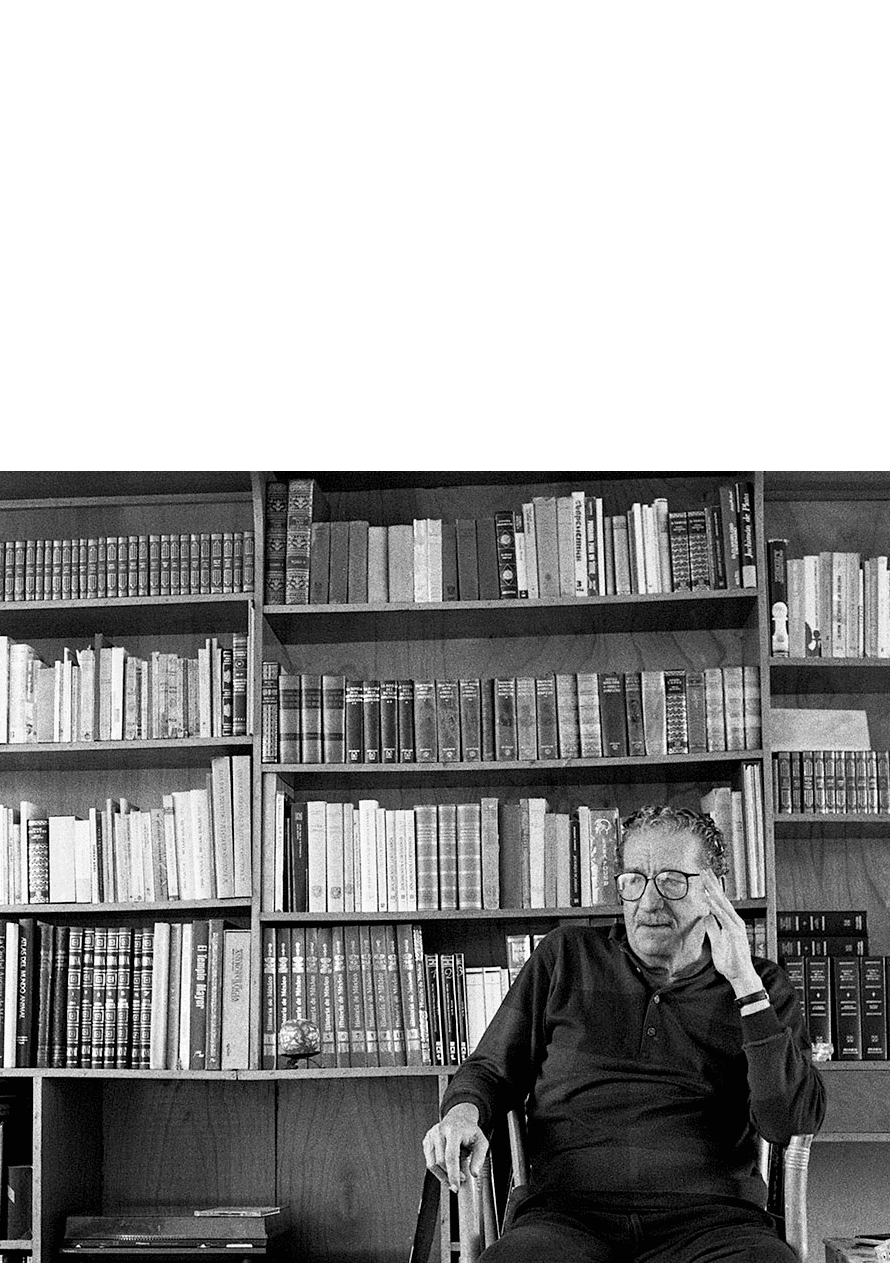
April 10, 1988 is a date that has been recorded in the history of soccer. Hugo Sánchez (Mexico City, 1958), at the time a Real Madrid striker, received a three-minute ovation by 80,000 crazy fans at the Santiago Bernabéu stadium after placing one of the most legendary goals in the Spanish League: a perfect bicycle kick goal against Logroñés.
At only 14 years old, Hugo Sánchez was already part of the Mexican National Team for the Olympic Games and won a CONCACAF tournament. His career began with UNAM’s Pumas; later he went to Spain to join the Atlético de Madrid squad in 1981, and achieved a legendary status while playing for Real Madrid, signed in 1985. “When I arrived in Spain, people yelled at me ‘Indian’; when I left, they called me ‘Hugol’”50, he recalls.
He is known as the “Pentapichichi” for having been a five-time winner of the trophy awarded in Spain to the top goal scorer in the national league championship. He was also the winner of a European Golden Shoe (1989–1990), and a four-time top foreigner scorer in La Liga (1987 to 1990).
With 164 goals he consolidated himself as the fifth top Real Madrid scorer in La Liga, and with 234 as the fourth overall top scorer in the history of the Spanish tournament. As a member of Mexico’s national team, he played 76 games and scored 42 goals. He is the best Mexican soccer player of the 20th century.

Carlos Santana (Autlán de Navarro, Jalisco 1947) is considered one of the greatest guitarists of all time. His name is inducted, next to the great legends of music, into the Rock and Roll Hall of Fame, not only for his mastery with frets, but also for having crossed the border that divided rock from Latin influence.
He built up his musical personality from an early age. His father was a mariachi musician and his brother a guitarist, so he started playing the violin and guitar at age five, in his native Jalisco. During his teenage-years, in Tijuana, he perfected his technique under the tutelage of Javier Bátiz, and at 22 years old he barged into the Woodstock stage, in front of more than 400 thousand people who went crazy to the rhythm of Evil Ways.
In 2000 his album Supernatural broke several sales records and in one night he won nine Grammy Awards, surpassing Michael Jackson’s record.
He is known as “The Guitar Shaman” for promot-ing the idea of music as spiritual medicine. True to his Chicano heritage, he rescues the myths of his ancestors to make them sacred, he acknowledges himself as a devotee of the Virgin of Guadalupe and a rebel in which the spirits of “Che” Guevara, Pancho Villa and Gerónimo converge, convinced that a “revolution without violence” is possible.

Wrestling is one of the most representative cultural manifestations of the country. A representation of the eternal struggle between good and evil: those that use clean wrestling techniques (técnicos) against those that use chicanery (rudos), ethics against illegality reflecting Mexican idiosyncrasy.
In the wrestling congregation a “Saint” of great veneration was proclaimed, the only flesh-and-blood superhero in the world: The Silver-Masked.
Behind the mask, which filled arenas, was Rodolfo Guzmán Huerta (1917–1984), born in Tu-lancingo, Hidalgo, but raised in the rough neighborhood of Tepito in Mexico City. His debut on the mat was in 1934 and after several falls —with no time limit— endless booing and discarded names such as Hombre Rojo, Murciélago II and Demonio Negro, in 1942 he appeared at the Arena México wearing the silver mask and the name that turned him into a legend.
The character transcended the wrestling mat to enter the world of comics and star in about fifty films —between 1958 and 1980— in which he fought against murderers, space monsters, vampire women and international gangsters. He is an icon of Mexican popular culture.
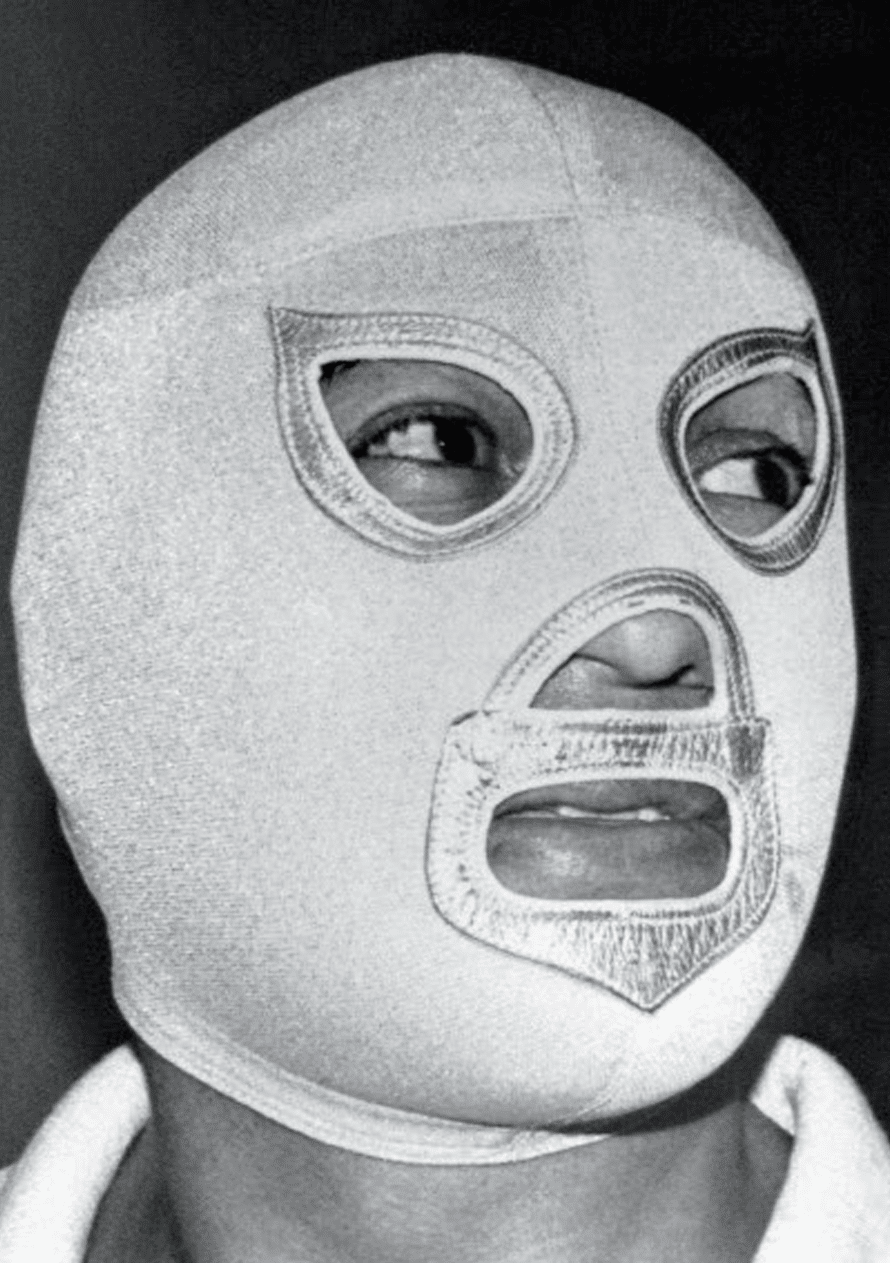

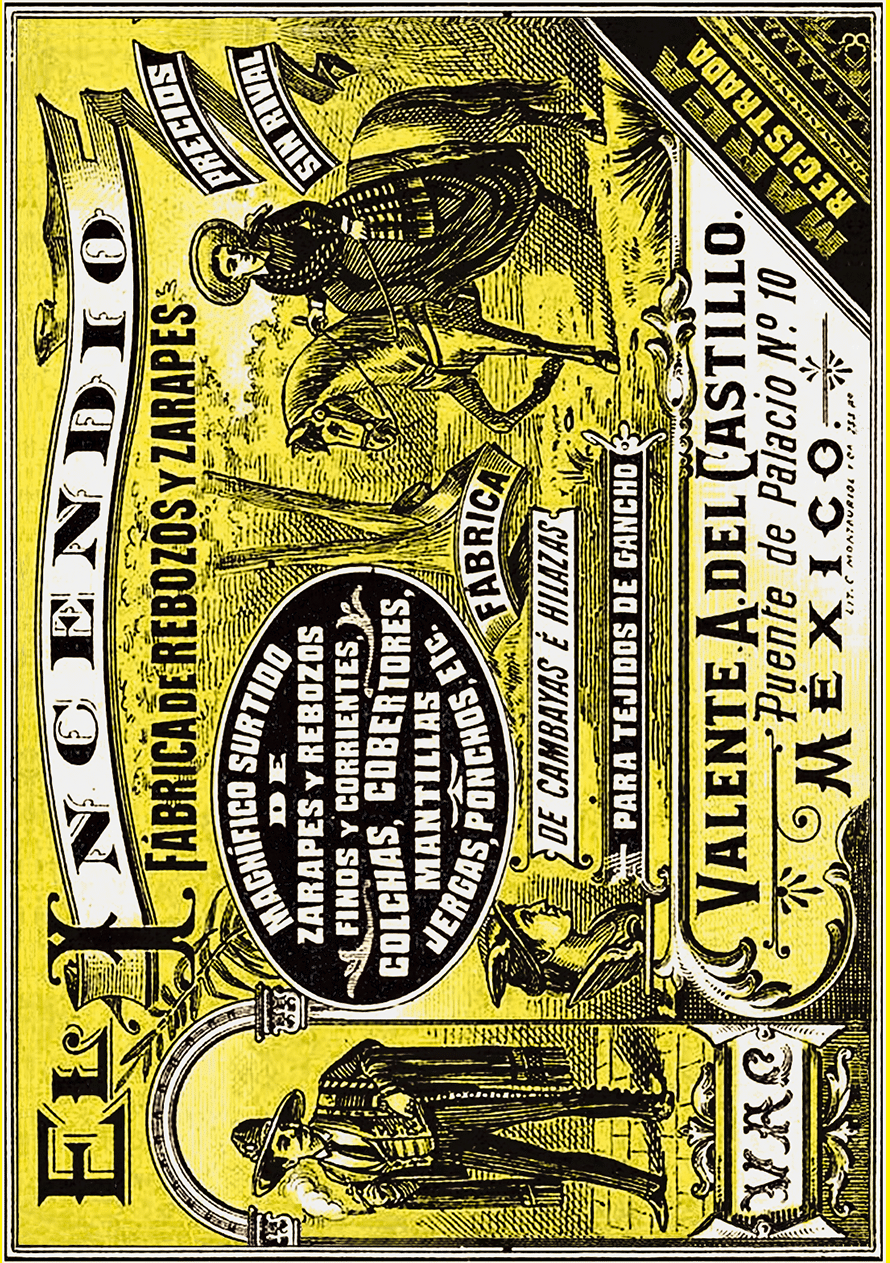
This traditional mestizo garment —originally for men’s use— blends in its warp the Mesoamerican textile tradition with European fabric. Although there is no exact data on its origin, it is believed that it is an evolution of the blanket known as tilma, used by the natives, merged with the Andalusian and Valencian capes brought by the Spaniards in the 16th century.
This garment is made in various regions of the country, where it is known by names such as: tilma, gabán, chamarro, jorongo, cotón, cobija and frazada. But the classic serape, symbolic of the country, is the one made by artisans in Saltillo, Coahuila.
In the last century, it was an inseparable garment of pawns, horsemen, charros and village people. In the 19th century it was used by insurgents, chinacos and bandits known as Los Plateados.
The serape from Saltillo is hand-woven on a treadle loom, with wool dyed with natural colors. The classic design has a degradation of eight shades of colors, which they call “shadows” —inspired by the sunrises or sunsets of the town— combined with a fringe, and the figure of a diamond at the center, symbolizing wealth.
The poetry of Tomás accompanied us in loving bliss but also in heartbreak, abandonment and solitude. For those dark stretches of life, Cantata a solas is […] almost “a survival manual”.51
Enrique Krauze
At the age of thirteen, Tomás Segovia (1927–2011) disembarked in Mexico and found in this country a solidary refuge, like so many exiles from his native Spain, facing a civil war at the time. In Mexico he lived the fullness of his teenage years and he studied until he became one of the great poets of the Spanish language.
His work —which earned him the Guggenheim Fellowship (1950), the Extremadura Creation Award (2007), and the Federico García Lorca International Poetry Prize (2008)— delved deeply into the mythical, the eternal mystery of love, and in an “eager of body” eroticism, of high literary flights.
Among his main works are La Luz provisional (1950), El sol y su eco (1960), Anagnórisis (1967) —long poem of complex structure, emblem of his bibliography—, Cantata a solas (1985) and La casa del nómada (1994).
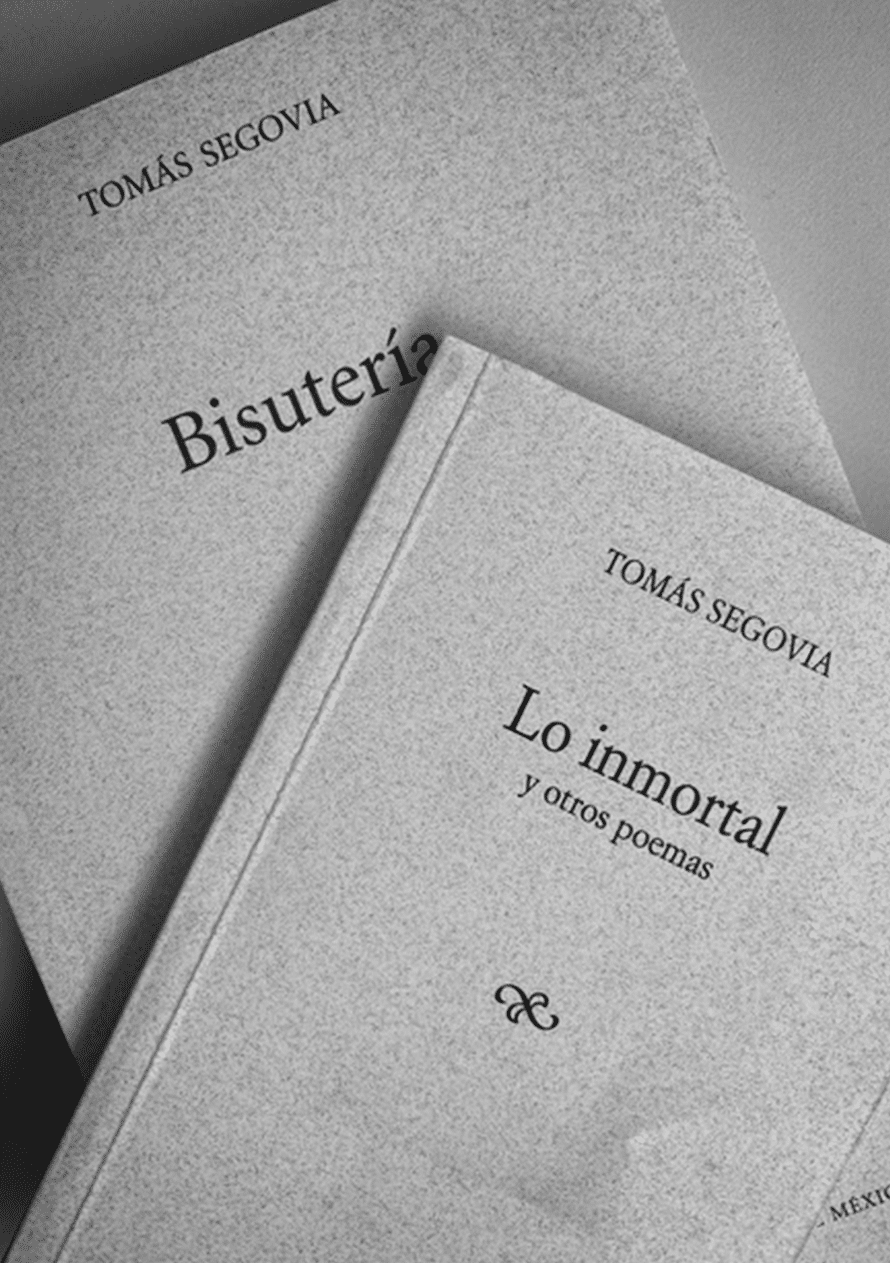
For Francisco Serrano (Mexico City, 1937), architecture is the greatest form of art. His work is considered a testimony of the current development of Mexico and has been recognized worldwide.
In 2002 he founded Serrano Arquitectos y Asociados along with Susana García and his son, Juan Pablo Serrano. He is the author of countless buildings such as the UNAM’s Advanced Engineering Center, Terminal 2 of the Benito Juárez International Airport of Mexico City, and the Mexican embassies in Guatemala, Germany and Brazil.
Thanks to his outstanding career, he has received several awards and prizes, including the Fine Arts Medal of Architecture (2018) and the National Prize for Arts and Sciences in the category of Fine Arts (2003). The National Institute of Anthropology and History (INAH) recognized his contribution to generating architectural heritage (2008). In addition, he received the National Architecture Award from the Engineers and Architects Association of Mexico (2011).

The Acapulco chair is one of the most renowned designs of the 20th century. It was created by artisans of the port that gave the chair its name in the 1950s, back in the day when Acapulco was the favorite refuge of great Hollywood stars.
It consists of an iron frame over which rubber cords in various bright colors are interwoven entirely by hand, resulting in a concave and comfortable seat, whose weave allows the wind to pass through its crevices, counteracting the summer heat.
Its simple and peculiar style has generated countless versions, the most popular is the “Hornitos”, small and oval; but there is also the “Condesa” design, with armrests; the “Pichilingue”, with a more rounded back and similar to a small bench; and the “Hornos” type, large and oval. They were all named in honor of Acapulco beaches.
Its use has extended to reach beach destinations in the United States, South America, Asia and Europe, where they even present it as the “Ibiza chair”, but one must not confuse the port; this design is entirely Mexican.

Originally from Orizaba, Veracruz, Francisco Gabilondo Soler (1907–1990) “is not only the most important and influential figure in the history of children’s music in Mexico and the Spanish-speaking world”, says musician and writer Gerardo Australia, “he is an essential model of popular culture that identifies us as Mexican and Latin American”.52
He was a child who hated being an adult. A lover of astronomy, linguistics and music, in 1934 he became “The singing cricket” and for three decades he represented the consciousness of several generations to whom he spoke “in the ear” from the frequency of the XEW radio station.
He was preyed on by Walt Disney, who futilely tried to acquire the rights to his characters and music several times. They only collaborated in 1963, when director Carlos Amador added several cartoons created by Disney in the film about the composer’s life.
He was the author of 240 songs, apparently simple, of which lyrics and melodies hypnotized children and adults, including “El Chorrito”, “La marcha de las letras”, “El ratón vaquero”, “El negrito bailarín” and many others that are still listened to in Mexico, the United States and Latin America.
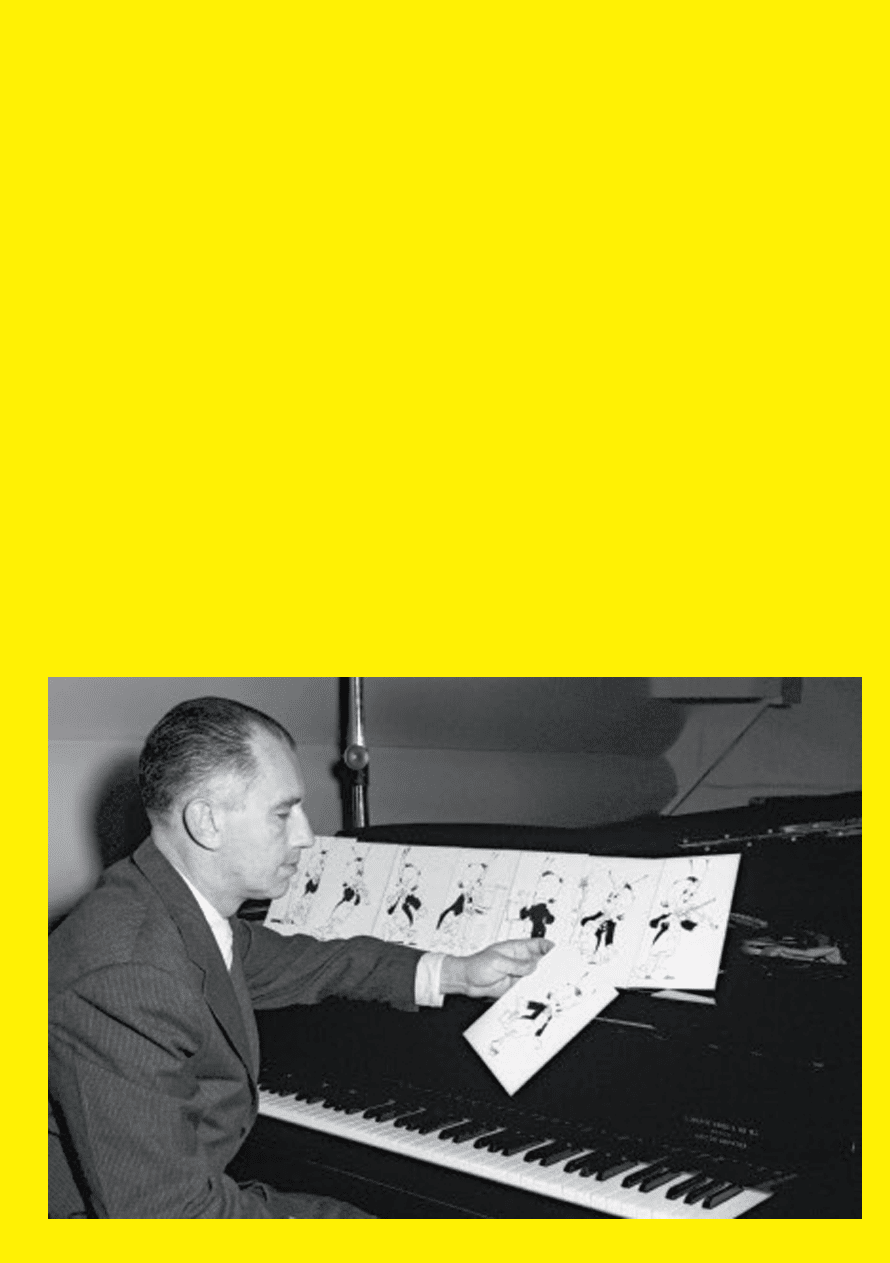
The charro hat and suit are emblems that define our country’s identity. In 1931, former president Pascual Ortiz Rubio decreed that the charro suit would be the official attire and a symbol of our nationality.
The origin of this mestizo garment dates back to colonial times with the appearance of chinacos, horsemen dedicated to farming tasks, who later became famous for their bravery when they aided the army, first in the War of Reform —Maximilian of Habsburg is credited with the modification of charro trousers at this stage— and later against the French intervention in Mexico.
Gradually the charro image gained popularity thanks to the characters of the Golden Age films where they would always appear dressed in a wide-brimmed hat, trousers with chaps and a jacket with attractive buttons.
In 1936, when Lázaro Cárdenas was accompanied by mariachis on his presidential campaign tour, he demanded that they wear the national attire and thereafter both symbols became intertwined.

Aztec soup is a traditional dish originally from Tlaxcala, a state whose name means “Place where tortillas abound” or “Land of maize”. It is popularly known as tortilla soup and it is the quintessential soup in Mexico.
It is made from fried maize tortilla strips, dipped in chicken broth and epazote, seasoned with tomatoes, garlic, onions and dried chili —either pasilla or ancho variety. To this base one can add other ingredients such as panela or ranchero cheese, avocado, shredded chicken, cream and pieces of pork rind, among others, which can be seasoned with lime juice.


Juan Sordo Madaleno (Mexico City, 1916–1985) stands out among the Mexican architects who promoted a modernization of architecture in Mexico during the first half of the 20th century. In 1937 he founded the firm Sordo Madaleno Arquitectos, presenting a style of “Mexican modern architecture” that was notable inside the country and abroad.
Some of his most representative buildings are the Palacio de Justicia in Mexico City (1964, in collaboration with architect José Adolfo Wiechers), Plaza Satélite (1971) in the State of Mexico, and the Presidente Intercontinental Hotel (1977) in Mexico City.
In 1985 his son Javier Sordo Madaleno Bringas, took the lead of the firm. Since then he has developed projects such as the Westin Regina Los Cabos Hotel (1993), in collaboration with José de Yturbe, and the San Josemaría Escrivá Church (2008). Additionally, he has been recipient of awards including first place for the best building in the Residential for Future Projects category in the World Architecture Festival (WAF), for his Amelia Tulum project (2018); and the Honorary Fellowship granted by the American Institute of Architects (AIA) in 2017, for his significant contribution to architecture and society.

